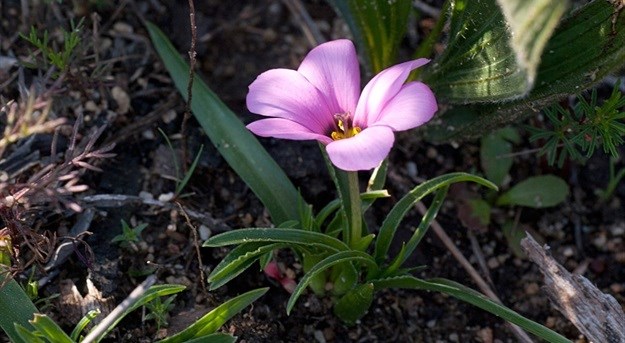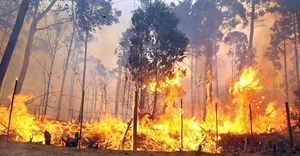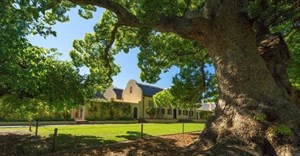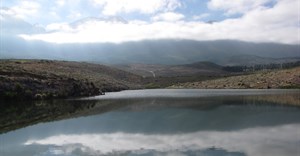Trending



 Sabre EMEA 2024 Awards: Razor PR, Retroviral top SA agenciesDanette Breitenbach
Sabre EMEA 2024 Awards: Razor PR, Retroviral top SA agenciesDanette Breitenbach Clothing brand Curve Gear opens new store in Tygervalley CentreLindsey Schutters
Clothing brand Curve Gear opens new store in Tygervalley CentreLindsey Schutters
Elections 2024
Jobs
- Electronic Workshop Technician Vereeniging
- Junior Orders Processing Clerk (Junior Estimator) Durban
- Stock Controller Cape Town
- Customer Service - UK - Work from Home Nationwide
- Accountant/Junior Financial Manager Cape Town
Rare vulnerable plants found at Vergelegen

Two of these Red Data (threatened) species are classified as vulnerable - Moraea versicolor (a pink flower with a yellow centre, commonly known as the midday clockflower) and Gladiolus trichonemifolius (common name ‘geelpypie’, cream-yellow with a darker yellow centre). Geissorhiza setacea is classified as endangered. It is a small plant with white petals; most Geissorhizas are referred to as satin flowers.
This follows the earlier find of two other plant species, previously unrecorded on the farm. They are the vulnerable Pauridia alba (white petals, yellow centre, commonly known as the Cape white star or ‘vleiblommetjie’), and the endangered purple-blue-petalled Babiana villosula (‘hairy bobbejaantjie’).
Some of these vulnerable plants, such as the Pauridia abla, were estimated to number well over 100 in the area under investigation. This profusion is in sharp contrast to the usual small, severely fragmented sub-populations resulting from urban development, agricultural expansion, invasive alien plant infestations and over-zealous mowing in public parks.
Lourensford alluvium fynbos

The plants recorded at Vergelegen were discovered in a critically endangered vegetation type known as Lourensford alluvium fynbos (LAF). The farm boasts about 15 hectares of LAF on the farm and this is considered the most conservation-worthy section of this vegetation type in the world.
LAF originally extended over 6000 hectares in the Somerset West area but only 9% remains, said Jacques van Rensburg, environmental project manager at Vergelegen. Some 3% of the original area is currently protected in the Helderberg and Harmony Flats nature reserves, with the remainder in the Lourens River area.
Some 21 known Red Data species occur within this LAF vegetation type. And in the Hottentots Holland area, there are almost 300 threatened plant species.
CREW

Custodians of Rare and Endangered Wildflowers (CREW) members, who discovered the five plants, comprise a network of keen amateur volunteers, linked with local conservation agencies. They visit various locations searching for plants on the Red Data List. The CREW programme is run by the South African National Biodiversity Institute in partnership with the Botanical Society of South Africa.
Volunteers fill in lengthy forms with information such as plant GPS coordinates, area geology and age of the veld, recording threats or disturbances. Their findings are posted on sites such as iSpot (a free online community helping to identify plants and other wildlife).
Van Rensburg said CREW teams have visited the estate since 2011, as increasing numbers of rare and endangered plant species are emerging. This is the result of an ambitious programme, initiated in 2004, to clear alien vegetation from 2200 of a total 3000 hectares of non-arable land. It is believed to be the largest private conservation undertaking in South Africa.
Centre of Learning Excellence

As 2000 hectares have already been cleared, the natural vegetation is flourishing, and a wide variety of plants is being discovered. Van Rensburg says there are at least 500 plant species in total on the farm. By 2014, 16 species on the Red Data List had been found, and the latest discovery brings the total to 21.
Vergelegen MD Don Tooth said Anglo American acquired the farm in 1987 and is conserving it for future generations of South Africans to enjoy. A Centre of Learning Excellence on the estate has become a prime destination for field research by local and international scientists.
Six Western Cape tertiary institutions, plus overseas universities such as Bristol and Marburg, are involved. The LAF fynbos has already been the subject of a thesis, while other researchers have investigated subjects as diverse as Argentinian ants, Nguni cattle, frogs, bontebok and water quality. Current research varies from examining the relationship between soil properties and woody plant invasion, to the characterisation of wetlands.
A recent paper on dragonfly diversity, by Stellenbosch University researchers based at the Department of Soil Science and the Department of Conservation Ecology and Entomology, was published in the renowned international journal Biodiversity and Conservation.

The research findings are shared with scientists, farmers and other stakeholders.






